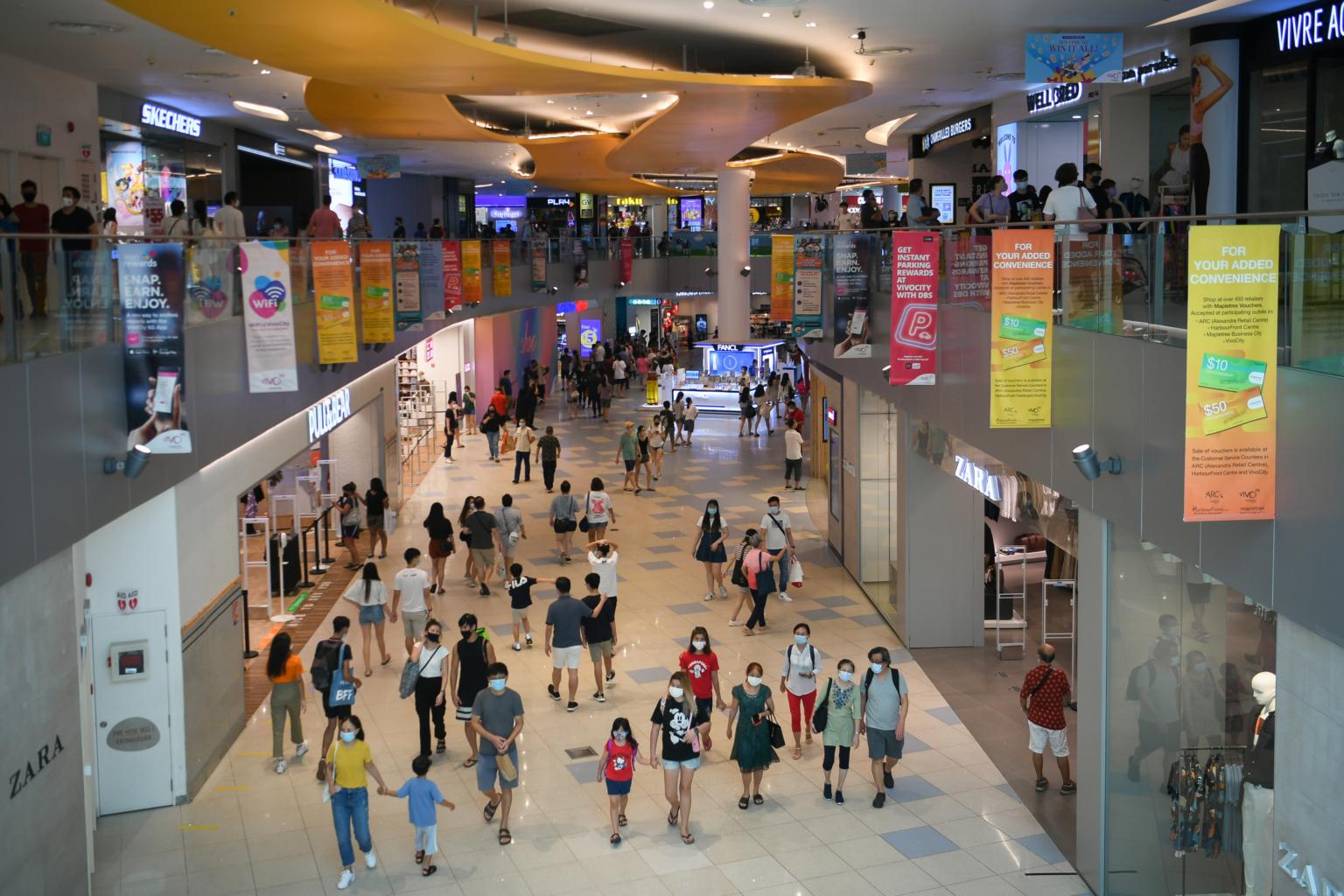Retail sales dismal in December with Christmas surge missing
Sign up now: Get ST's newsletters delivered to your inbox

Most retail industries continued to register declines in sales in December 2020.
ST PHOTO: SHINTARO TAY
Follow topic:
SINGAPORE - Retailers ended the year on a sour note as the traditional Christmas spending splurge was missing in action.
The quieter year end also took the wind out of a shopping surge - from mega events like Singles' Day and Black Friday - that kept year-on-year sale declines surprisingly low in November.
Takings at the till dropped 3.6 per cent last December from the same month in 2019, far steeper than the revised 1.7 per cent year-on-year decline in November, according to Department of Statistics data on Friday (Feb 5).
The December drop was also worse than the median forecast of a 2.2 per cent fall by economists polled by Bloomberg.
Turnover, excluding motor vehicles, fell 4.5 per cent in December, compared with a revised 2.8 per cent drop in November.
Seasonally adjusted sales dipped 0.9 per cent month on month, reversing the 7.3 per cent jump in November. Excluding motor vehicles, the decline came in at 0.7 per cent.
Although some safe-distancing measures were relaxed, analysts said the Christmas shopping season was a low-key affair compared with December 2019.
They added that a sustained recovery in consumer spending is unlikely without a significant rebound in employment growth.
DBS Bank senior economist Irvin Seah said: "Consumer expenditure will rise only with better job prospects and higher income."
Singapore's overall unemployment rate dropped for a second month, falling from 3.3 per cent in November to 3.2 per cent in December. The jobless rate in October was 3.6 per cent.
However, December's rate was still higher than the 2.3 per cent recorded a year earlier.
HL Bank senior treasury strategist Jeff Ng said that while the outlook for the coming months will likely stay relatively subdued, retail sales are likely to improve gradually, if unevenly.
He said the Chinese New Year season next week will lift retailers and lower base effects will also help, especially from the second quarter, as they will be compared with the circuit breaker period from April to June last year, when economic activity and consumer demand were crunched.
The estimated total retail sales value in December was $4 billion, with online accounting for about 11 per cent. Exclude motor vehicles and the total comes in at about $3.5 billion, with online sales taking 12.6 per cent.
Most retail industries continued to register declines in sales in December.
The cosmetics, toiletries and medical goods, department stores as well as apparel and footwear industries recorded declines of between 22.8 per cent and 35.4 per cent, as they continued to be affected by low visitor arrivals.
In contrast, supermarkets and hypermarkets, computer and telecommunications equipment and furniture and household items registered sales growth of between 20.8 per cent and 25.3 per cent, owing mainly to higher turnover for groceries, mobile phones and household appliances.
Sales of recreational goods also rose, up 10.3 per cent amid higher demand for sporting items, but food and beverage revenue fell 16.5 per cent in December from the same month in 2019, although that was smaller than the 22.4 per cent tumble in November.
Turnover at food caterers fell 73.6 per cent year on year in December, as demand for event catering remained low.
Similarly, sales at restaurants dropped by 17.2 per cent and by 4.9 per cent at cafes, food courts and other eating places, but turnover at fast-food outlets rose by 2.5 per cent.
Correction note: An earlier version of the article said sales at restaurants, cafes and food courts dropped by 17.2 per cent. It should be sales at restaurants dropped by 17.2 per cent and by 4.9 per cent at cafes, food courts and other eating places. We are sorry for the error.

